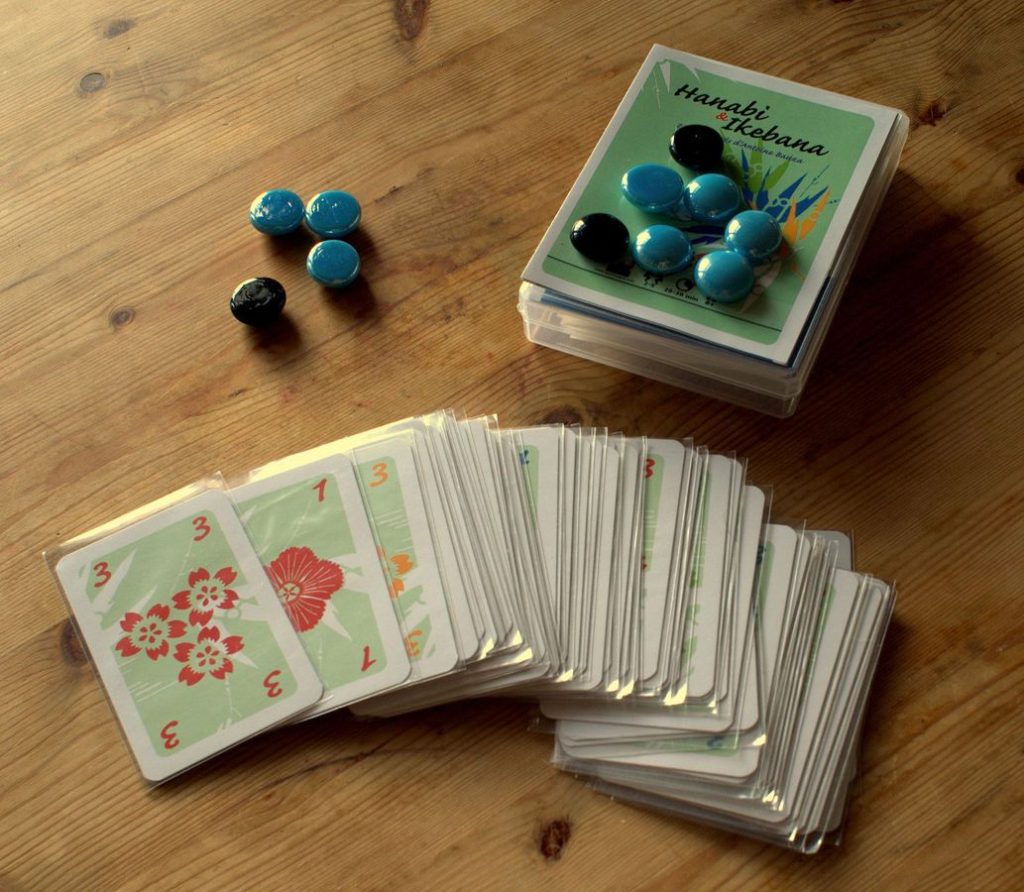Believe it or not the player count of two through five is actually true!
I pulled it out at my weekly gameday after letting it sit dormant it in my bag for the past three months. My game group is into heavier games, so I had not opened up the game because the rules are so darn simple.
Last night, I wasn’t interested in the open games so I started playing 2P with another player who also likes lighter games with a backup plan sliding into Jambo if it doesn’t work. Jambo didn’t have a chance! We played it a few times 2P. Then we dragged in another player for a couple rounds 3P. And then someone joined for a 4P game and then a 5th player to round out the night.
A quick overview of the game: Hanabi is a cooperative card game with has a specialized deck of five suits: three 1s, two each of 2-3-4s, and one 5 of each suit. The goal of the game and team is to build five straight-flush piles in the center of the table (one for each suit, 1-2-3-4-5 with no duplicates nor jumps in the straights). You hold your hand of cards facing away from you and on your turn you can either tell one of your partners information about her hand, discard a card (to later have the right to give information), or play a card to the table (and hope it is playable cause you only get 3 mistakes before you lose!). The game ends when you either complete all 5 straights (absolute awesomeness), you make 3 mistakes (utter catastrophe), or the deck runs out at which point each player gets one last turn (inform, play, discard). If the game ends with the deck running out, you add up the top cards on the deck to see how well you did.
We had an absolute blast. It is obviously not heavy and dense like Automobile or Caylus, but it is a great card game and a great coop game. It will definitely make you think! Easy simple ruleset, tight complex game.
Because you only have one action a turn (discard, play, inform), turns fly by and because those clue tokens are so damn precious, things get pretty tight after the initial few turns. Even though I generally hate games with a memory element, Hanabi was designed just right and the memory aspect did not bother me at all!
What surprised me is that the game tightens up quite differently with the varying player counts. One reason is because the game clock (the deck) remains the same length no matter the number of players. So if things re developing methodically like a 2P game – but you’re actually playing a 4P game – you’ll get totally blindsided with the deck being emptied out before you know what happened!
It’s also more than game speed – player interaction actually changes with the number of players. For example, the clue tokens run out very quickly in a 5P game, so immediately actionable information and turn order becomes critical. However 2P game can leave you in stuck with a situation where there is nothing to tell the partner and they have nothing to tell you but you’re both too chicken to throw things away, or you get into cycle where you tell your partner something, she acts on it, which draws another card for you to inform and her to play….back and forth and all the sudden its your turn again, there are no beads on the box and you have no idea what’s in your hand either.
I suspect the best way to enjoy this game is to do a straight explanation of the rules and then play a few games with the table developing your group’s own conventions as you go. I wonder if getting 15-19 pts (as we did) is fairly common, but to get past it you’re gonna have to take some risks or else you risk running out of the deck before you’re ready.
Knizia in his heyday had a knack for developing complex games with a simple ruleset (Schotten Totten comes to mind) and this game falls in line with that heritage. Clearly 2010 was Bauza’s year, and while I have been lukewarm on 7 Wonders, if you like traditional-ish card games and you like co-op play, this is certainly worth trying out!

originally posted on Boardgamegeek.com